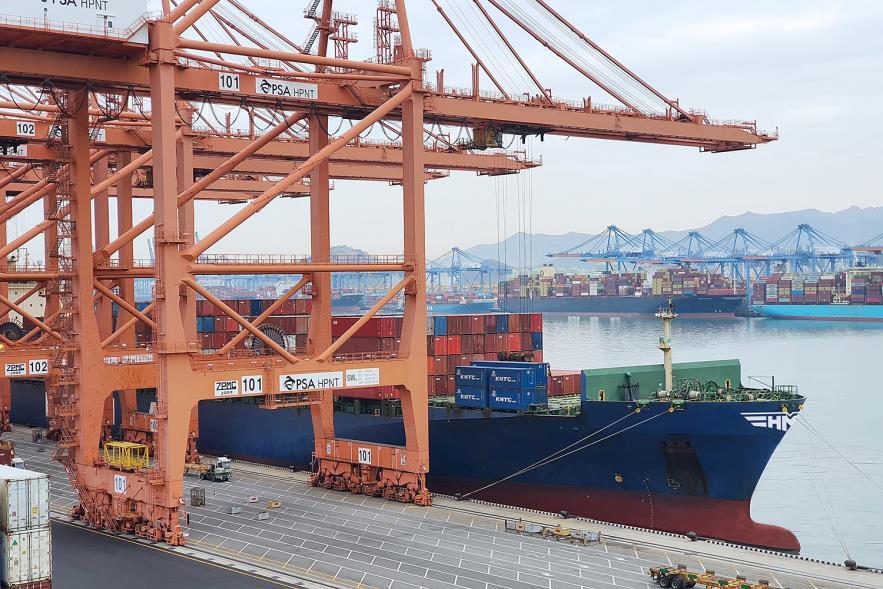Facing continuous rises in sea freight charges, South Korea’s industries have showed mixed reactions, with major shippers benefiting from surplus demand and small exporters reeling under the cost burden, industry data shows.
While brokerages set to raising their target stock price for prosperous top-tier shippers, policymakers here are struggling to provide fiscal relief measures for exporters under pressure.
The Shanghai Containerized Freight Index, showing the level of the current sea-route freight rate, rose to 2,979.76 as of last Friday, up 146.34 points from a week earlier and hitting a record-high since the given index kicked off in October 2009.
Reflecting the global trade volume recovery, the SCFI has remained on an uptrend since November last year, with only a temporary fluctuation during the first-quarter low season this year.
The America west route and the European route -- the two maritime routes most frequently used by South Korean exporters -- saw their average freight soar to $4,967 and $4,325 per twenty-foot-equivalent unit, respectively.
The Baltic Dry Index, which measures the freight average of bulk carriers for iron ore, coal and grain, also hit 2,808 points on Monday, rising about threefold from a year earlier.
The real problem, however, is that the actual on-site freight charge may turn out even higher than the officially tallied figures, market observers noted.
A key boosting factor for the freight charge hike was the blockage of the Suez Canal in late March, an incident that disrupted a global shipping industry already hit by the COVID-19 pandemic since last year. Though the blocking container ship was removed after six days, many trade ships had to detour or pay extra costs during the period.
But shipping companies claimed that the Suez Canal factor was only one additional factor, pointing out that the drastic increase in trade volume had been leading to a bottleneck in global supply chain.
Reflecting such views, government agencies and think tanks warned that the current premium in the sea freight charge is likely to last throughout the first half of the year.
“The supply of marine and air shipping services is expected to fall behind the rising amount of trade, in sync with the recovery of the global economy and the inoculation of people with vaccines,” the Korea Ocean Business Corp. said, expecting the shortage to linger throughout 2021.
The soaring freight charges weighed down most heavily upon small exporters that tend to sign short-term contracts at heightened prices -- unlike conglomerates that have long-term shipping contracts at a fixed price.
Some would fail to ship products at all as container ships often come chock-full from Shanghai as they stop over at Korean ports before heading to the US or other overseas markets.
The Korean government and market champions -- such as Hyundai Merchant Marine -- have been making gestures to alleviate the trade barriers for small firms.
The Korea SMEs and Startups Agency is currently running a special subsidy program for small and medium-sized exporters, receiving applications until next month. Over 500 firms have already rushed to request for the fiscal support and the figure is anticipated to soar in upcoming weeks.
In the private sector, HMM has assigned additional container ships in key sea routes, offering priority to the struggling small and medium-sized exporters.
Meanwhile, the country’s largest shipper saw its stock value soar amid mounting expectations for an earnings surprise. The price per stock reached 39,950 won ($35.90) during trading hours on Wednesday, hitting a 52-week high and growing by more than tenfold from a year earlier.
By Bae Hyun-jung (
tellme@heraldcorp.com)








![[Today’s K-pop] Blackpink’s Jennie, Lisa invited to Coachella as solo acts](http://res.heraldm.com/phpwas/restmb_idxmake.php?idx=644&simg=/content/image/2024/11/21/20241121050099_0.jpg)